
Listen to Engineering Angles, Tractebel's podcast!
In the latest episode of Engineering Angles, we caught up with Neha Bansal, Deputy General Manager of Hydropower & Water Resources in Business Development &...
Find out moreTractebel’s Infrastructures specialists have safely contributed to the dismantling of Les Awirs thermal installation, once a coal and also a pioneering biomass fire power plant. Next to the dismantled plant, our Energy teams are simultaneously developing and building Belgium’s largest - and one of the world’s most efficient - combined-cycle gas turbine power plants.
One of Belgium’s biggest thermal power plants has been dismantled with the help of Tractebel’s demolition team. The three 150-m high chimneys of the colossal Les Awirs thermal power plant, located in Flémalle, province of Liège, have been iconic landmarks on the banks of the Meuse River since the 1950s. Originally commissioned in 1951 as a coal-fired-plant, Les Awirs was converted to a single 75 MW biomass unit in 2005.
A state-of-the-art power plant is being built next to the site of the former and cleaned up coal yard of les Awirs. It will play a crucial role in securing a reliable supply of local electricity. With an installed capacity of 875 MW, the new, ultramodern Flémalle combined-cycle gas turbine (CCGT) plant will be able to compensate for fluctuations in renewable energy production and produce the equivalent of the annual consumption of more than one million households. Thanks to cutting-edge technologies and an energy efficiency of minimum 63%, the plant will be one of the most efficient CCGT power plants in the world. Going forward, it will be possible to operate the plant on green gas. Together with ENGIE Electrabel, our Energy experts are instrumental in the engineering, procurement, and construction management (EPCM) of this monumental project.
The former Les Awirs power plant on the banks of the Meuse in Liège Province, Belgium
Our Industrial Sites Rehabilitation (RIS) team was mandated by ENGIE Electrabel to lead the demolition project from A to Z. The process began in 2019 with the pre-feasibility studies and is slated for completion in 2026. Tractebel’s RIS division, specialized in the dismantling and demolition of installations and industrial sites, divided the monumental task into three phases:
Phase 1, April – December 2021: Demolition of existing facilities
All structures located on the site of the future gas turbine were removed to a depth of 0.5 m below ground level, and deep foundations were also removed to allow the construction of the new combined-cycle gas turbine plant. Soil remediation was carried out.
Phase 2, April 2021– December 2023: Dismantling of the five turbines and production buildings
All the above-ground structures in this zone, including the three iconic chimneys, were completely removed, cellars emptied and rainwater stagnation avoided. This zone will be left as a brownfield for possible future development.
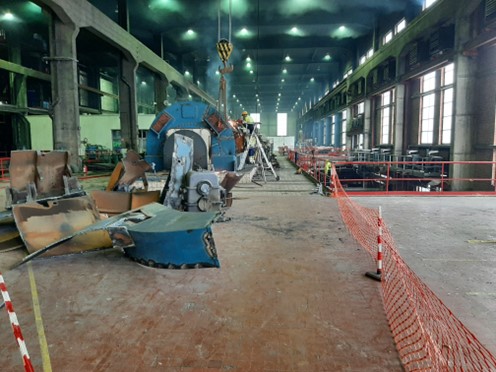
Dismantling a 50-MW turbine
Phase 3, September 2023–2026: Demolition of the remaining buildings
Most buildings will be demolished, except for a few that will undergo a complete transformation to serve as the control centre of the new power plant and its related technical and administrative facilities. Demolition will continue in parallel with construction.
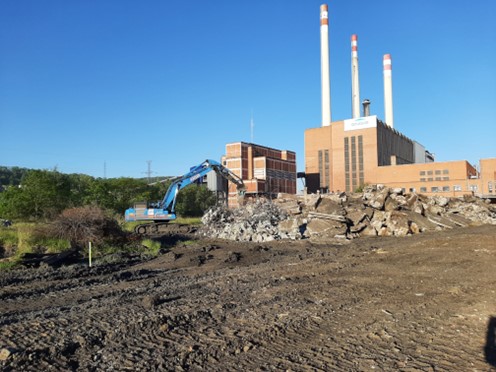
Demolition of the remaining structures in the former coal yard

Areas of the Les Awirs site affected in each of the three phases of demolition
Several structures were demolished using explosives. From October 2022 to September 2023, a total of four blasting operations were successfully carried out. The three landmark chimneys, however, could not be brought down in their entirety by using explosives: because of the River Meuse on one side and a residential area on the other, a specially designed platform was constructed. This allowed workers and small demolition machinery to be transported to the top, and consequently reduce the chimneys’ height by half, to 75 m. For two chimneys, the remaining 75 m were demolished using explosives.
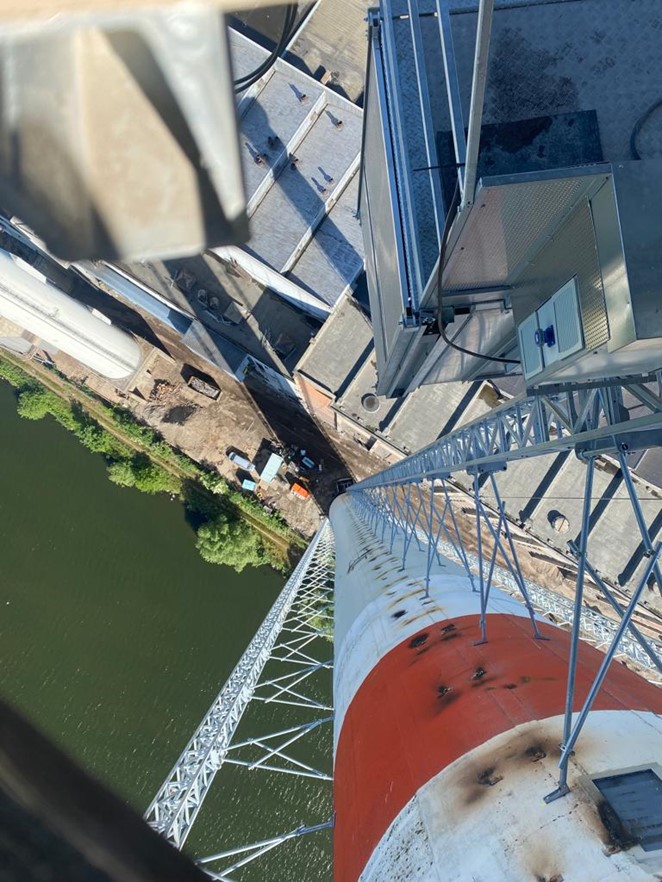
View from the 150m-high platform, specially designed to facilitate demolition of the iconic chimneys
All the installations on the 18-hectare site must be completely free of asbestos and dismantled. To locate and remove the asbestos, we partnered with SGS Search inspection agency. The main facilities to be dismantled were the five turbines, the four boilers (from 125 to 300 MW), and of course the three chimneys. These installations presented some interesting structural challenges: the buildings and boilers were 50 m high and built from heavy concrete and steel structures.
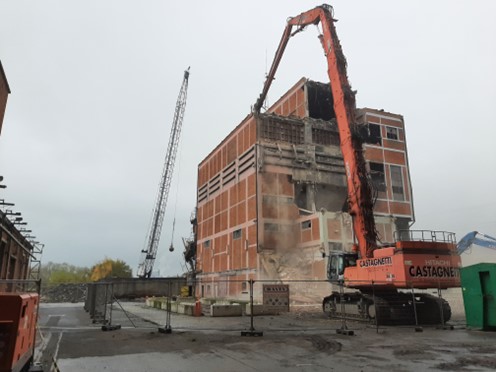
A wrecking ball and excavator working in tandem to demolish a heavily reinforced storage building
Aside from the numerous technical difficulties inherent in the demolition of an industrial site - stability, vibrations, dust, noise, hazardous products, asbestos, residual products related to the use of coal and heavy fuel, … - there are also countless external constraints: ENGIE's administrative buildings and workshops operating during the asbestos removal and demolition works, construction of the new CCGT plant structures during demolition, the proximity of a residential area and the Elia substation with its high-voltage lines and pipeline running alongside the site, the immediate vicinity of the river and its towpath, a stream running under the site (risk of collapse following the passage of demolition cranes), the nearby Namur to Liège railway line, and more.
These challenges make this project even more unique, and obliged the team to carry out in-depth risk studies to successfully complete it using methods that limit all risks: safety is the top priority!
While clearly a crucial aspect of the project, Tractebel’s contribution does not end with a meticulously planned, safe and expertly executed demolition.
Our Energy experts are now working with ENGIE Electrabel as an integrated team, under an Engineering, Procurement and Construction Management (EPCM) setup. The team is responsible for project management, engineering works (together with an external partner), package management, factory inspection during manufacturing, site construction management and site commissioning. These services cover both the complete power plant perimeter and the high voltage connection to the Elia grid.
Collaboration across departments for a complete solution
Our Energy and Infrastructures experts pooling their resources and capabilities is a stellar example of multiple teams across different departments providing a complete solution. The Flémalle / Les Awirs CCGT project, highly strategic for Tractebel, ENGIE and the Belgian authorities, aims to add dispatchable power to the Belgian grid by the end of 2025.
“This landmark project reinforces our EPCM and demolition competencies and our relationship with ENGIE," says Denis Dumont, CEO Tractebel Belgium. "It underscores our expertise, flexibility, and commitment as a trusted partner on major energy projects. Together with our partners, our Infrastructures and Energy teams are proud to collaborate on this new, ultramodern addition to the Belgian energy network that will be one of the most efficient in the world. The Flémalle project will help secure the country’s energy supply, while drastically reducing emissions.”
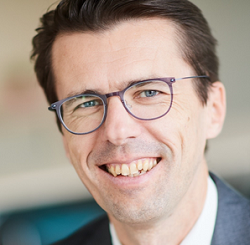
Denis Dumont, CEO Tractebel Belgium
The inaugural first stone of the new power plant was laid on September 15, 2023. Stay tuned for updates!
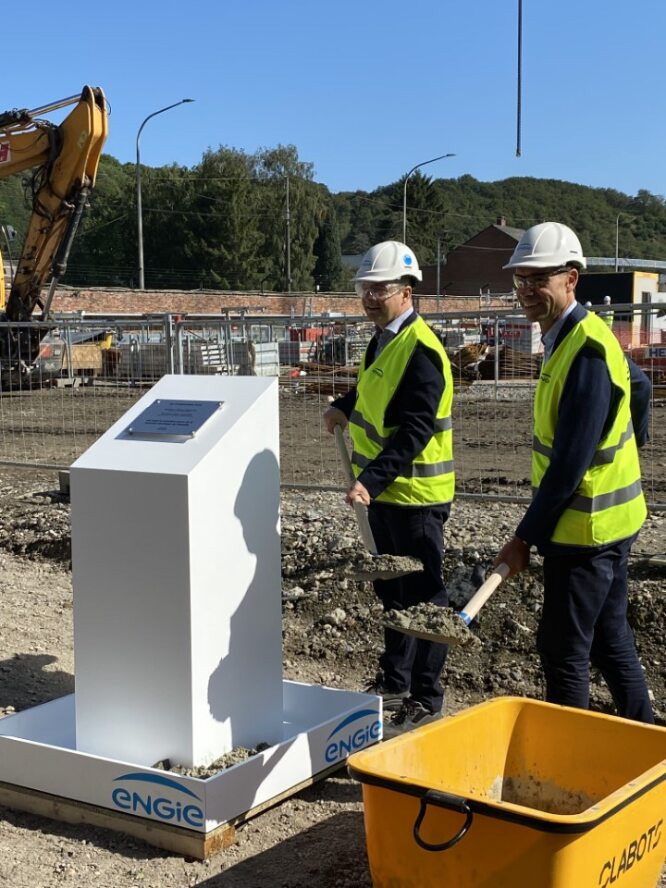
Laying the future power plant’s ceremonial first stone

In the latest episode of Engineering Angles, we caught up with Neha Bansal, Deputy General Manager of Hydropower & Water Resources in Business Development &...
Find out more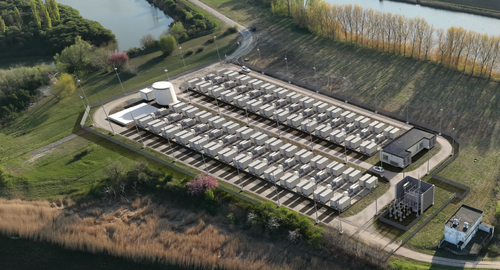
Tractebel helps ENGIE build its second large-scale battery park in Belgium, contributing to shaping a flexible, reliable and sustainable energy system in the country.
Find out more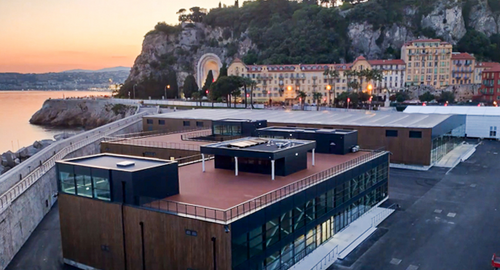
Our Urban teams from France and Monaco are leading the design and construction supervision of the Mediterranean Pavilion, ahead of the third United Nations Ocean...
Find out more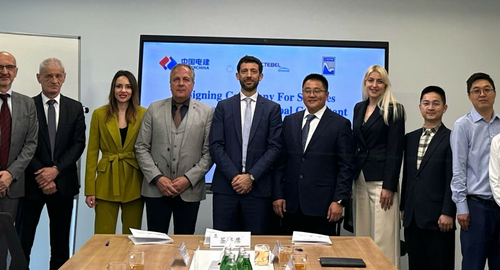
Our transport infrastructure experts signed a mandate on April 25, 2025, to provide technical services on the first metro project in the Western Balkans. This is our...
Find out more